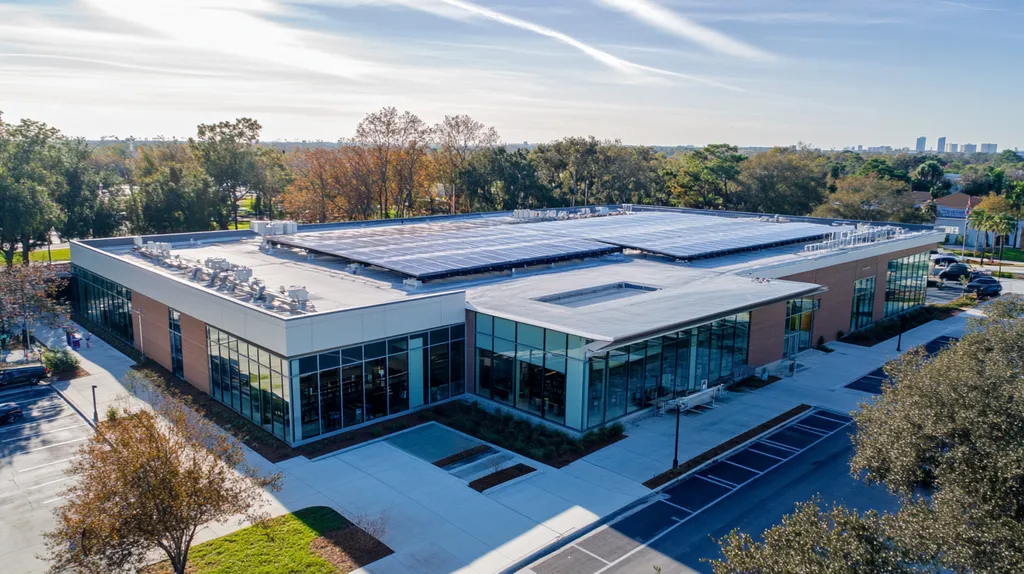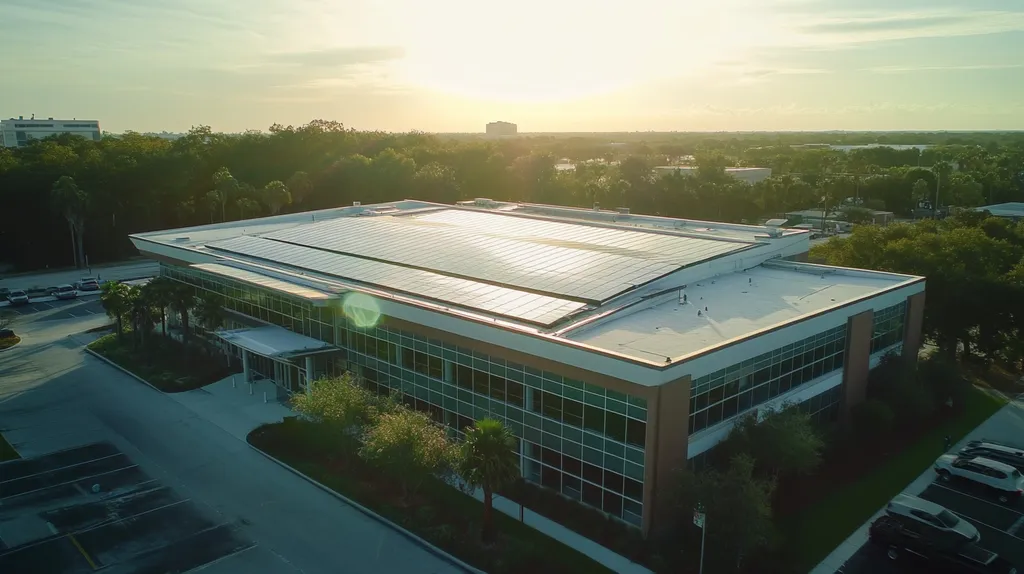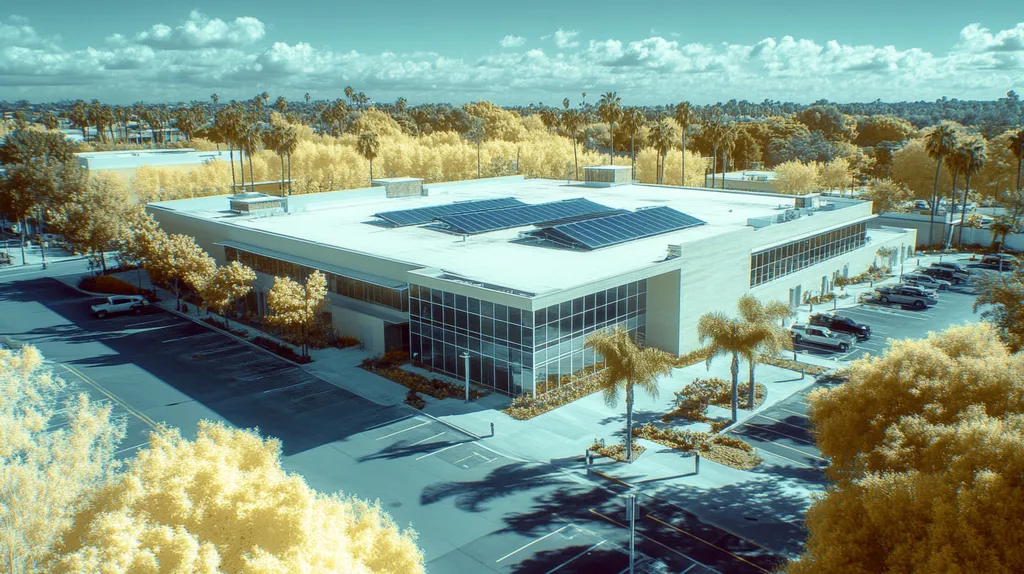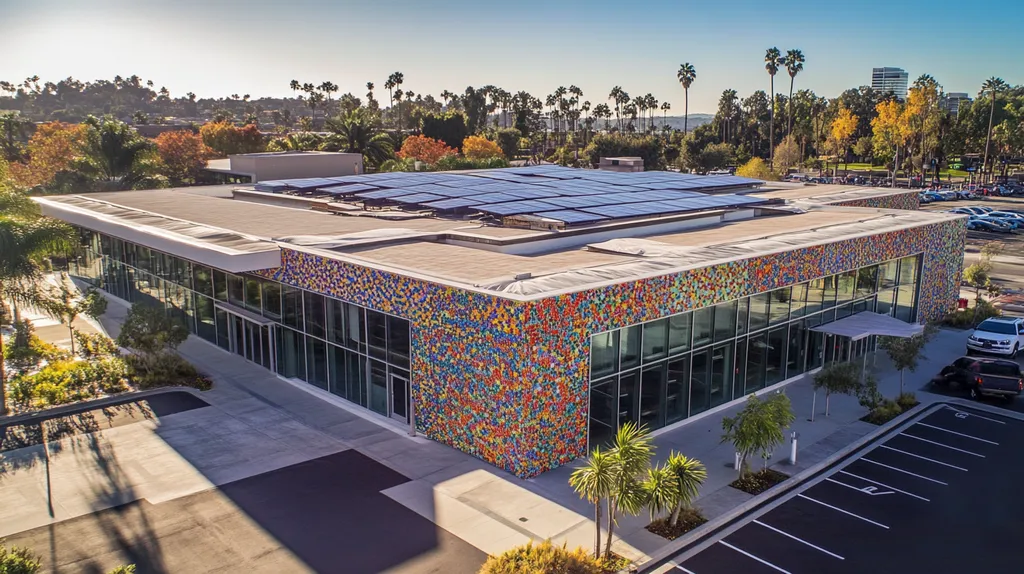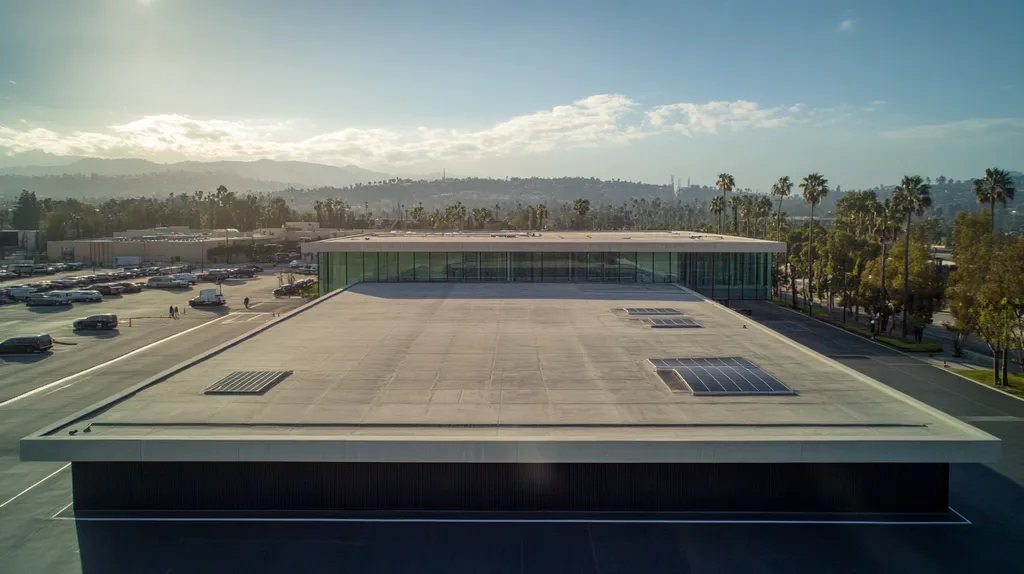In the evolving landscape of commercial roofing, chemical compatibility testing stands as a critical yet frequently overlooked safeguard. Industry data reveals that 30% of premature roof failures stem directly from chemical incompatibility between materials and environmental agents.
From degraded membranes to compromised structural integrity, the consequences of inadequate testing ripple through the industry, costing property owners millions in repairs annually.
This comprehensive examination separates proven testing methodologies from common misconceptions, providing property managers with evidence-based strategies to protect their roofing investments.
SECTION 1: COMMON MISCONCEPTIONS
For commercial roofing professionals, a robust understanding of chemical compatibility is critical for ensuring long-term system performance. Ignoring this aspect can trigger serious consequences such as unexpected roof failures and soaring maintenance costs. Alarmingly, many property owners and facility managers cling to misconceptions about this topic. Addressing these prevailing misunderstandings is key to making informed decisions that protect investments.
Ignoring Manufacturer Guidelines
Many property owners dramatically underestimate the significance of adhering to manufacturer guidelines when choosing roofing materials. These guidelines arise from rigorous testing and industry standards, designed to maintain harmony between various roofing components. Disregarding these recommendations can cause the use of incompatible materials that degrade over time, potentially leading to leaks and structural instability.
For example, employing a sealant not endorsed by the roofing membrane manufacturer can undermine a roof’s structural integrity, possibly nullifying warranties and incurring legal repercussions. It’s essential to understand that compatibility isn’t universal—what works for one system may not work for another, making adherence to manufacturer guidelines absolutely essential.
Moreover, combining different chemicals in roofing applications can result in unforeseen reactions. Neglecting these guidelines raises the risk of chemical interactions that can severely weaken roofing materials, culminating in expensive repairs or full-blown replacements. Understanding and adhering to manufacturer recommendations can ultimately streamline the decision-making process for property managers and lead to better long-term outcomes.
Overlooking Environmental Factors
Environmental conditions can play a pivotal role in how roofing systems perform. Yet, many facility managers tend to overlook these crucial factors when evaluating chemical compatibility. Factors such as climate, temperature changes, and exposure to pollutants can dramatically affect the interactions between roofing materials.
Consider a roof that endures extreme heat; the materials may expand and contract, leading to premature degradation. This is particularly relevant in areas with high UV exposure, where roofing components are more susceptible to chemical breakdown. Ignoring such environmental influences can lead to compatibility issues that diminish the lifespan of a roofing system.
Additionally, pollutants like acid rain can chemically alter roofing materials over time. Property owners must be attuned to the specific conditions of their locations, ensuring that selected materials can endure the stresses imposed by their environment. By comprehending the distinctive environmental challenges a roof may face, facility managers can make well-informed choices that prevent costly repairs and enhance overall roof longevity.
Assuming Universal Compatibility
A frequent misconception within the roofing industry is the belief that all materials are universally compatible. This oversimplified view can result in hazardous and expensive errors. Every roofing material boasts unique chemical properties that can interact differently when combined.
For instance, not every adhesive is suitable for all roofing membranes. Using an adhesive intended for one membrane on another can lead to swift failures. This common error can impose significant costs on property owners due to repairs and lost income from downtime.
The variations in chemical interactions extend even to different brands. A product from one manufacturer may not mesh well with a product from another, regardless of their intended applications. Thus, believing in generalized claims about compatibility can lead to poor decision-making.
To combat this misconception, roofing professionals ought to invest time in thorough research and testing. Conducting chemical compatibility tests tailored to the selected materials is essential for achieving optimal performance and safety in roofing systems. Ensuring this due diligence can safeguard investments and enhance the overall effectiveness of roofing projects.
SECTION 2: PRACTICAL IMPLICATIONS
The consequences of not addressing chemical compatibility in commercial roofing are serious and often costly. Research shows that nearly 30% of roof failures arise from harmful chemical reactions between materials and environmental agents. When incompatible substances interact, they can accelerate the degradation of roof membranes, leading to expensive repairs and potential safety hazards. Understanding these implications is vital for property owners and facility managers committed to ensuring a robust roofing system.
Roof Membrane Degradation
The need for chemical compatibility tests cannot be overstated when it comes to preventing roof membrane degradation. When roofing materials come into contact with incompatible substances, accelerated wear can lead to various forms of damage. For instance, even a small spill of harsh chemicals can result in significant breakdown of a thermoplastic roof membrane, jeopardizing its structural integrity.
These incompatible substances can induce cracking, blistering, or delamination over time. Such deterioration not only shortens the lifespan of the roofing system but also drives up energy costs due to decreased insulation performance. Property owners must recognize the importance of maintaining chemical compatibility to sidestep these expensive repercussions.
Routine inspections can be instrumental in spotting potential chemical threats before they escalate. Additionally, training maintenance staff on the risks associated with chemical exposure can further mitigate these risks. A proactive approach ensures that roofing systems remain functional and endure for years to come.
Ultimately, investing in chemical compatibility tests and regular monitoring can protect the roof’s performance, translating to considerable cost savings for property owners in the long haul.
Structural Integrity Risks
Understanding the impact of chemical reactions on structural integrity is essential for property owners. When roofing materials are compromised by chemical exposure, the structural integrity of the entire roof can be at risk. For example, a roof designed for specific weight loads can fail catastrophically if its materials have degraded due to incompatible substances.
This not only creates immediate safety hazards but also incurs hefty repair costs. A compromised roof may buckle under stress, leading to liabilities and potential injuries. It’s critical for property owners to recognize the indispensable role chemical compatibility plays in safeguarding both structural safety and operational continuity.
Conducting rigorous testing allows property managers to predict how different substances will react with roofing materials over time. By integrating these tests during the selection and installation phases, managers can make informed choices about the best products suited to their building’s unique environmental conditions.
Ensuring structural integrity through thoughtful chemical compatibility testing is vital for long-term building safety and resilience. It fosters a trusting partnership between property owners and their roofing professionals.
Maintenance and Repair Challenges
Ignoring the issue of chemical compatibility can lead to complex maintenance and repair challenges. When roofs incur damage from chemical interactions, repairs often become intricate and costly. Standard maintenance transforms from a proactive measure into a reactive scramble, disrupting daily operations.
For instance, when a roof membrane is compromised due to chemical exposure, addressing the damage involves more than just superficial repairs. The underlying issues may remain hidden, leading to recurring problems. Property owners could find themselves continuously allocating time and resources to fix ongoing leaks and failures stemming from inadequate testing.
Moreover, maintenance staff may require specialized training to effectively manage the implications of chemical exposure. This added complexity can inflate operational costs and hinder standard maintenance protocols. By prioritizing compatibility tests, property owners can streamline their maintenance processes.
In short, addressing chemical compatibility proactively simplifies both maintenance and repair efforts, leading to more efficient resource management and extending the lifespan of the roof.
SECTION 3: COST OF MISINFORMATION
The stakes are alarmingly high when it comes to chemical compatibility in commercial roofing. A lack of reliable information can result in premature roof failures, eroding property value and heightening liability risks. Research underscores that a staggering 30% of commercial roofs face early failure due to chemical incompatibilities, making informed decision-making crucial. This section delves into the costly consequences of misinformation, covering premature roof failure, escalating maintenance costs, and potential liability issues.
Premature Roof Failure
The ramifications of inaccurate information regarding chemical compatibility can lead to severe roof failures. Systems constructed with incompatible materials can degrade more rapidly than anticipated, significantly shortening their lifespan. For instance, applying the wrong adhesive to a roof membrane often leads to blisters and delamination.
This not only compromises the building’s overall integrity but also necessitates costly replacements sooner than planned. Estimates indicate that replacing a roof prematurely can cost property owners up to three times more than the initial installation. Safeguarding assets demands a thorough understanding of product specifications and extensive compatibility testing.
The fallout also extends beyond immediate financial burdens. Roofing contractors can suffer reputational damage, while property owners must navigate the aftermath of poor choices. In essence, what begins as a minor oversight can escalate into a significant financial liability.
Ultimately, neglecting these compatibility concerns from the outset can lead to serious structural issues. Investing in comprehensive compatibility tests now helps protect against unexpected expenses and guarantees long-term roof reliability.
Increased Maintenance Costs
Misinformation surrounding chemical compatibility consistently leads to increased maintenance costs. When roofing materials react unfavorably, the wear and tear on the system speeds up, necessitating more frequent repairs and continuous inspections.
For example, roofs that suffer from chemical-induced damage may require additional sealants or premature replacements, straining budgets that hadn’t factored in such renovations. This unanticipated financial burden can disrupt operational funds and hamper other areas of property management.
It’s imperative for facility managers to recognize that maintenance costs can skyrocket, particularly when downtime for repairs is considered. Damaged roofs can halt operations, leading to significant productivity losses.
Through early investments in comprehensive compatibility testing, property owners can effectively mitigate these ongoing expenses. Understanding these costs is essential when weighing the actual financial implications of roof installation.
Potential Liability Issues
The consequences of misinformation can translate into severe liability risks for property owners and facility managers. If a roof fails, leading to damage to the property or surrounding areas, the resulting lawsuits can be financially crippling. Additionally, insurance premiums may rise significantly due to increased risk exposure.
Industry regulations commonly mandate compliance with specific safety and performance standards. Failing to ensure chemical compatibility can expose owners to legal challenges and potential regulatory fines. Regular testing not only helps maintain compliance but can also serve as a defense against claims arising from material failures.
Moreover, a roof collapse due to chemical incompatibility could result in injuries, extending the legal ramifications. The fallout could tarnish reputation in the market, in addition to financial losses. Thus, appropriate testing safeguards not only physical assets but also the invaluable trust property owners build with their clients.
In the end, awareness of these liability issues is crucial. Implementing best practices for chemical compatibility can effectively reduce risks and protect investments within the commercial roofing landscape.
SECTION 4: REALITY CHECK
The landscape of commercial roofing presents significant risks surrounding chemical compatibility, with a striking 70% of roofing failures attributed to material incompatibility. These failures often go unnoticed until it’s too late, leading to costly repairs and safety concerns. Gaining insight into the chemical interactions of roofing materials and their respective spectra can spare building owners from extensive financial losses. This section examines essential topics, including the nuances of chemical spectra, the importance of selecting compatible materials, and the implications of proximity hazards that affect roofing system integrity.
Understanding Chemical Spectrums
A comprehensive understanding of chemical spectra is vital for property owners. Various roofing materials react differently to common substances like oils, solvents, and cleaning agents. For instance, specific thermoplastic membranes may be particularly sensitive to certain adhesives, putting their longevity at risk.
Extensive testing measures exist to evaluate how materials interact under specific conditions, considering elements such as temperature, exposure duration, and concentration. Each of these parameters significantly influences long-term compatibility and performance.
Not every chemical interaction manifests prominently or immediately. Subtle yet harmful chemical reactions can lead to extensive structural damage over time, jeopardizing the roof’s integrity.
Property owners must prioritize understanding the chemical properties of the materials they choose. This proactive knowledge helps prevent unexpected reactions that could result in unscheduled downtime or costly replacements.
Recognizing Compatible Materials
Selecting compatible materials is critical for the success of any roofing system. Not every membrane or insulation type is appropriate for every chemical environment. The best practice involves aligning materials with their anticipated chemical exposure.
For example, silicone-based coatings are renowned for their chemical resistance and are ideally suited for industries dealing with harsh substances. However, a frequent misstep is to use sealants that don’t match those conditions, resulting in degradation.
Facility managers should consistently consult compatibility charts and engage in thorough evaluations of their roofing materials. Collaborating with manufacturers can provide valuable insights into product-specific risks and essential performance characteristics.
Continuous inspection and maintenance are crucial as well. Early detection of any signs of chemical damage enables proactive interventions, ensuring the roof remains intact and operational.
Considering Proximity Hazards
Proximity hazards often remain overlooked in commercial roofing discussions, yet they play a pivotal role in chemical compatibility. The positioning of hazardous materials, such as fuel storage tanks or chemical processing facilities, can significantly affect roofing systems.
For instance, roofs near industrial activities may be subjected to harsh chemicals, mandating the use of specialized materials to endure these conditions effectively. A clear understanding of nearby operations informs better roofing material choices.
Furthermore, regulatory frameworks exist to address these proximity challenges. Adhering to local environmental regulations enhances safety and mitigates liability risks for property owners.
Facility managers should conduct regular assessments of surrounding operations and their implications for the roofing system. Taking a proactive stance can help avert considerable damage, significantly extending the lifespan of the roof.
SECTION 5: EVIDENCE-BASED ALTERNATIVES
In today’s high-stakes roofing environment, the decisions made regarding materials can spell the difference between success and significant financial loss. Many property owners still operate on outdated assumptions, which can lead to unforeseen complications, including premature roof failure. By adopting evidence-based strategies, stakeholders can fortify their roofing systems for longevity and reliability. This section delves into the importance of consulting manufacturer literature, conducting thorough compatibility tests, and opting for systems designed for optimal compatibility.
Consulting Manufacturer Literature
Manufacturers provide crucial literature that serves as a roadmap for selecting roofing materials. This literature often contains in-depth information about the chemical compatibility of their products, outlining potential risks associated with certain substances. For instance, exposure to incompatible chemicals can weaken roofing membranes, setting the stage for leaks and structural damage.
Property owners must make it a priority to review this documentation prior to making material selections. Manufacturers conduct extensive testing, yielding valuable compatibility data about chemical exposure, pollutants, and environmental impacts. Taking the time to consult these resources can lead to substantial savings by avoiding costly repairs or replacements down the line.
Furthermore, leveraging manufacturer insights fosters informed decision-making. Understanding the recommendations and limitations provided in these documents empowers property managers to choose products that align with their specific needs.
In essence, consulting manufacturer literature not only lays the groundwork for selecting suitable materials but also significantly enhances the chances of a project’s success.
Conducting Compatibility Tests
Implementing chemical compatibility tests is an essential step in guaranteeing the longevity of roofing systems. These tests provide a clear understanding of how different materials will interact under various conditions, guiding educated choices. A common test involves applying specific chemicals to roofing materials and monitoring any physical or chemical reactions.
By utilizing these tests, property owners gain insights into the potential risks associated with certain chemicals. Particularly in industries with high exposure to aggressive substances, this knowledge is invaluable. Identifying compatibility issues early can mitigate significant damage and downtime during operations.
Moreover, independent third-party laboratories offer unbiased results for these tests. Engaging with neutral testing facilities gives property managers confidence in the findings, free from any conflicts of interest that may arise with in-house assessments.
Ultimately, conducting compatibility tests enables property owners and facility managers to make data-driven decisions, providing invaluable support for the performance and lifespan of their roofing systems.
Using Compatible Roofing Systems
Selecting roofing systems that prioritize compatibility is key to achieving optimal performance and extending the overall lifespan of the roof. This involves choosing materials specifically designed to work in harmony with one another. For example, pairing suitable membrane types with compatible adhesive products prevents chemical reactions that could lead to premature failures.
Adapting roofing systems to unique environmental conditions brings additional advantages. In regions with high exposure to chemicals, sourcing chemical-resistant materials becomes essential to maintain structural integrity. This proactive approach minimizes both maintenance costs and the impact of harsh environmental elements.
Furthermore, successful roofing contractors are invaluable resources in this process, attuned to the nuances of compatible systems. Their expertise guides property owners in selecting materials that will perform optimally in their specific circumstances.
By focusing on compatible roofing systems, stakeholders significantly reduce the likelihood of failures, leading to enhanced building performance and improved safety. This dedicated focus ultimately paves the way for greater long-term satisfaction and productivity in commercial spaces.
SECTION 6: TEST AND VERIFY
The integrity of a commercial roofing system is under constant threat when chemical compatibility is neglected. The National Roofing Contractors Association reports that improper material pairings can lead to catastrophic roof failures, costing property owners thousands in unexpected repairs. Implementing thorough testing protocols is essential to ensure compatibility, minimizing long-term risks and safeguarding structural integrity. This section highlights the critical role of ASTM testing standards, on-site compatibility assessments, and the need for regular inspections.
ASTM Testing Standards
Adhering to ASTM testing standards is vital for confirming chemical compatibility in commercial roofing. These standards provide a systematic framework to evaluate how different roofing materials interact under various circumstances. For example, ASTM D2240 measures the hardness of materials, offering insights into their resistance to chemical exposure.
Roofing professionals should consistently reference these standards, enabling informed decision-making while reducing the risk of trial and error. By staying updated with the latest iterations of these standards, property managers can ensure that their materials are evaluated against current innovations and industry practices.
Neglecting these guidelines can make roofing projects precarious. Errors in material selection frequently result in unanticipated roof failures and expensive replacements. Therefore, following ASTM standards is not merely good practice; it is essential for the long-term success of roofing projects.
On-Site Compatibility Testing
On-site compatibility tests are a crucial step in maintaining the reliability of roofing systems. These assessments allow facility managers to evaluate material interactions in the very environment where they will be utilized. By simulating actual conditions, property owners can identify potential issues before installation takes place.
For example, using a new sealant on an existing roof without preliminary tests could cause degradation or failure. On-site tests ensure that property owners understand how different materials will interact over time, helping to prevent unforeseen maintenance complications.
Investing in these tests not only avoids future expenses but also affords peace of mind. Validated choices can significantly enhance the longevity and performance of roofing systems, providing invaluable evidence when weighing material options.
Regular Inspection and Monitoring
Regular inspections and monitoring are crucial for maintaining chemical compatibility throughout a roof’s lifecycle. As conditions evolve, so too can the chemical properties of roofing materials. Ongoing assessments enable property managers to detect incompatibilities before they escalate into costly issues.
For example, a roof may be subjected to harsh chemicals from neighboring facilities that weren’t considered during initial evaluations. Regular inspection protocols should include monitoring for signs of wear, chemical degradation, or unexpected reactions. Vigilance in these areas prevents minor concerns from turning into major repair projects.
Additionally, establishing an inspection schedule that accounts for seasonal changes enhances a roof’s resilience. Consistent monitoring empowers facility managers to make informed decisions regarding maintenance and upgrades, maximizing the value of their roofing investment.
The Bottom Line
With 30% of commercial roof failures stemming from chemical incompatibility, the stakes for proper testing have never been higher.
The evolution from traditional built-up roofs to today’s advanced synthetic systems has only intensified the need for rigorous compatibility validation.
Property owners can no longer afford to rely on outdated assumptions or skip crucial testing protocols that protect their substantial roofing investments.
The evidence is clear: implementing standardized chemical compatibility tests, maintaining thorough documentation, and conducting regular monitoring can prevent catastrophic failures that cost millions in repairs annually.
As roofing technology continues to advance, chemical compatibility testing stands as the critical foundation for ensuring long-term performance and protecting valuable commercial assets.
FREQUENTLY ASKED QUESTIONS
Q. What misconceptions exist about commercial roof chemical compatibility?
A. Many property owners mistakenly undervalue manufacturer guidelines, thinking all materials are universally compatible. This leads to issues like leaks or structural instability. Ensuring adherence to specified materials prevents costly mistakes and enhances roof longevity.
Q. How does chemical incompatibility affect industrial roof performance?
A. Chemical incompatibilities can drastically degrade roof membranes, leading to failures and safety hazards. Systems may degrade due to unexpected reactions with surrounding chemicals, resulting in costly repairs and potential structural issues.
Q. What are the costs associated with misleading information on commercial roofs?
A. Misleading information can lead to premature roof failures that necessitate costly replacements. Incorrectly understanding compatibility might also yield increased maintenance costs, significantly impacting financial forecasts for property management.
Q. Why is understanding chemical spectra important for commercial roofs?
A. Understanding chemical spectra helps property owners anticipate how materials react to environmental factors. Each chemical interaction varies, and knowing specific sensitivities prevents unexpected degradation, ultimately preserving the roof’s functionality.
Q. How should property managers conduct chemical compatibility tests?
A. Property managers should implement systematic chemical compatibility tests by simulating actual environmental conditions. It’s important to engage independent laboratories to ensure unbiased results, enhancing material selection accuracy.
Q. What are proximity hazards related to industrial roofs?
A. Proximity hazards arise when nearby chemical activities affect roofing materials. Understanding these risks helps guide material choices for resilience and long-term safety, preventing damage from unforeseen chemical exposure.
Q. How can property owners optimize their commercial roofing systems?
A. Owners can optimize roofs by consulting manufacturer guidelines, conducting rigorous compatibility tests, and using systems designed specifically for their environmental conditions. This practice minimizes failures and extends the roof’s lifespan.


